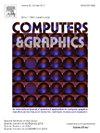Exploring user reception of speech-controlled virtual reality environment for voice and public speaking training
IF 2.5
4区 计算机科学
Q2 COMPUTER SCIENCE, SOFTWARE ENGINEERING
引用次数: 0
Abstract
In this paper, we explore the development and assessment of a virtual reality (VR) system designed to enhance public speaking and vocal skills among professional and non-professional speech users alike. The system’s foundation lies in a speech recordings corpus of 529 utterances given during presentations by a total of 15 students. From these data, we extracted voice parameters such as pitch, timbre, and speech rate using speech processing methods. We also asked six expert annotators to evaluate the stress levels present within each presentation. This multi-faceted analysis facilitated the selection of specific parameters for real-time animation control of virtual characters responding dynamically to the change in the speaker’s voice. Through these mechanics, we could cultivate user proficiency in voice modulation, thereby improving overall speaking abilities and confidence. Furthermore, the system fosters self-awareness of vocal quality, promoting proper utilization of the voice in professional settings. Our VR system offers a dual-mode environment that combines traditional public speaking scenarios in front of a virtual audience with a relaxing forest setting, where users can control weather conditions with their voice. To assess the system’s efficacy, we conducted a pilot study with five participants. Additionally, we provide preliminary design guidelines informed by our user study to support the development of future VR-based speech trainers.

探索语音控制的虚拟现实环境对语音和公共演讲培训的用户接受度
在本文中,我们探索了一个虚拟现实(VR)系统的开发和评估,该系统旨在提高专业和非专业演讲用户的公共演讲和发声技能。该系统的基础是一个由15名学生在演讲中发表的529个话语组成的语音记录语料库。从这些数据中,我们使用语音处理方法提取语音参数,如音高、音色和语音速率。我们还请了六位注释专家来评估每个演示文稿中的压力水平。这种多方面的分析有助于选择特定的参数,以实时动画控制虚拟角色对说话者声音变化的动态响应。通过这些机制,我们可以培养用户对语音调制的熟练程度,从而提高整体的说话能力和信心。此外,该系统培养了对声音质量的自我意识,促进了在专业环境中正确使用声音。我们的VR系统提供双模式环境,将传统的在虚拟观众面前的公共演讲场景与放松的森林环境相结合,用户可以用他们的声音控制天气状况。为了评估该系统的有效性,我们进行了一项有五名参与者的试点研究。此外,我们还根据用户研究提供了初步的设计指南,以支持未来基于vr的语音训练器的开发。
本文章由计算机程序翻译,如有差异,请以英文原文为准。
求助全文
约1分钟内获得全文
求助全文
来源期刊

Computers & Graphics-Uk
工程技术-计算机:软件工程
CiteScore
5.30
自引率
12.00%
发文量
173
审稿时长
38 days
期刊介绍:
Computers & Graphics is dedicated to disseminate information on research and applications of computer graphics (CG) techniques. The journal encourages articles on:
1. Research and applications of interactive computer graphics. We are particularly interested in novel interaction techniques and applications of CG to problem domains.
2. State-of-the-art papers on late-breaking, cutting-edge research on CG.
3. Information on innovative uses of graphics principles and technologies.
4. Tutorial papers on both teaching CG principles and innovative uses of CG in education.
 求助内容:
求助内容: 应助结果提醒方式:
应助结果提醒方式:


